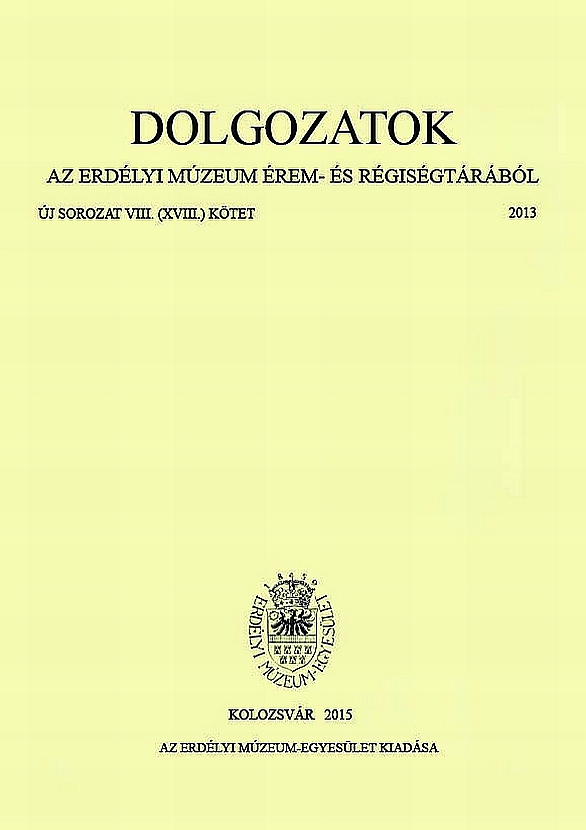Megjegyzések az avar kori Kárpát-medence mellkeresztjeinek kapcsolatrendszeréhez
Pectoral Crosses in the Carpathian Basin during the Avar Age
Author(s): Edina GulyásSubject(s): Archaeology, Cultural history, 6th to 12th Centuries
Published by: Erdélyi Múzeum-Egyesület
Keywords: Avar Age; Carpathian Basin; pectoral crosses; typology; Christianity
Summary/Abstract: In the archaeological material from the Carpathian Basin dated in the Avar Age a relatively high number of artefacts with Christian characteristics were identified. It can be presumed that, in a way or another, the owners of these objects had come in contact with Christianity. Among these finds the number of the pectoral crosses is relatively low; however, mostly this category suggests a possible Christian owner. Taking a closer look on the graves in question, as well as on the other grave goods and the surrounding burials, one can hardly speak about individuals with unequivocal Christian faith in the Carpathian Basin during the Avar Age. The typology of the pectoral crosses of the period was elaborated by Éva Garam based on the finds discovered until the beginning of the 21st century; however, since then several new pieces have been identified. The author divided the 28 pectoral crosses discussed in this paper in five main groups. From methodological point of view Éva Garam’s typological system was also taken into consideration, but emphasis was put on other, mainly morphological aspects. The main groups were divided further in subgroups based both on technological characteristics and decoration. Each type has numerous analogies, mainly from the Crimea, the Balkans, Anatolia, the Near East and Africa, but similar pieces are also known from Western Europe. The picture resulting from the comparison of the typological analysis with the written sources is somewhat controversial. Except for two pieces, the pectoral crosses discovered in graves can be dated in the Early and Middle Avar Period, whereas the written sources mention Christian Avars or Avars who were preparing or were forced to be baptized for the first time at the end of the 8th century, more precisely in 795. On the other hand, in 796, referring to the synod held somewhere in the Danube region, those groups of the Avars are mentioned which should have been re-baptized because the barbarization of their members. This information confirms the results of the archaeological analysis, namely that the graves containing crosses can be connected to a not purely Avar milieu. Three graves with cross were found in the cemetery at Lesencetomaj belonging to the Keszthely culture; the rest of the material was discovered in majority in cemeteries with relatively strong Germanic influences, like Kölked, Jutas, Környe, or Bratei/Baráthely (Romania). Based on the heterogeneous material discovered in the graves as well as the supposedly mixed ethnical composition of the cemeteries, several scholars accepted a religious synchretism among the Avars. On these grounds one cannot presume the existence of a pure Christian religion (not even in the case of the Romanized population), but the total rejection of the presence of the Christianity should also be reconsidered.
Journal: Dolgozatok az Erdélyi Múzeum Érem- és Régiségtárából. Új sorozat
- Issue Year: 2013
- Issue No: VIII
- Page Range: 33-51
- Page Count: 19
- Language: Hungarian

